Each step of the transition slowly progresses adult dogs to a raw diet. The first step of the raw feeding transition includes simple ingredients so as not to overwhelm the pet parent and the dog during the switch of processed food to fresh food.
Simple meals are encouraged when beginning the raw feeding transition. It is recommended to avoid adding too many new ingredients to the diet during the transition.
Lean White Meat Proteins
Select lean, white meat proteins to feed as muscle meat.
Lean Raw Meaty Bones
Edible bone is needed in step one and it is best to select lean, white protein raw meaty bones. Ideally select the same protein for meaty bones and muscle meat.
Fiber-Based Vegetables
Including fiber-based vegetables will help with the transition to fresh food by regulating stool.
Don’t rush the transition process. It is normal to get excited and want to push forward. However, it is best to allow the dog to set the pace of the raw transition. Some dogs take effortlessly to raw while others need more time.
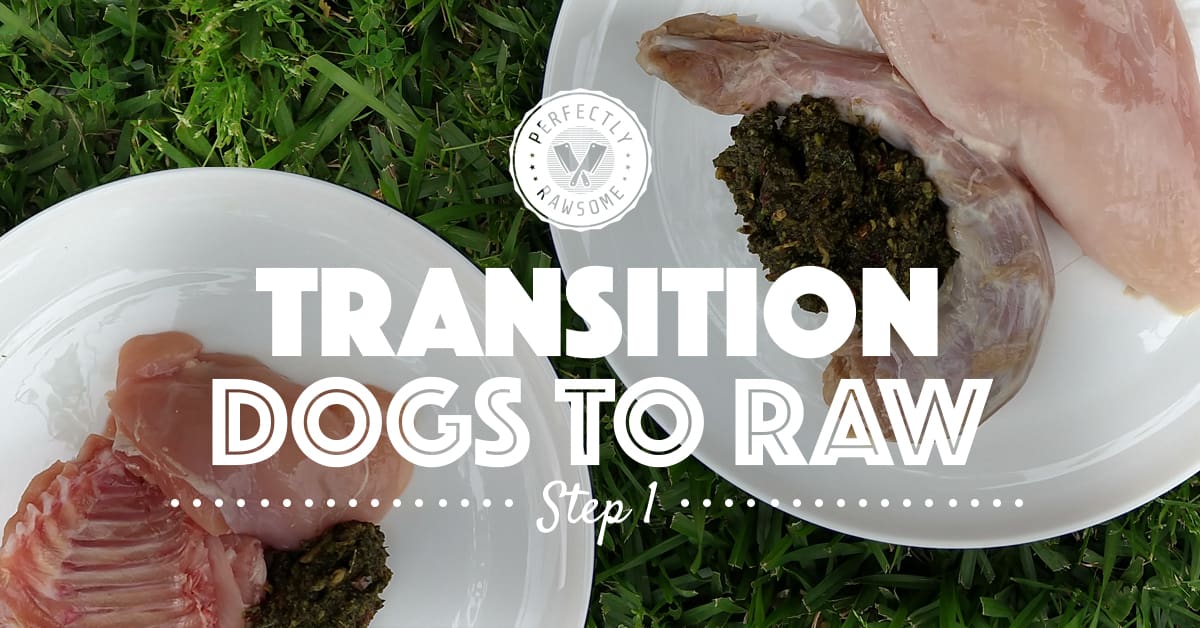
The Beginning of the Raw Transition
The first step of the raw feeding transition does not match BARF or PMR model ratios because organs are not fed. Some dogs require more bone in comparison to others to maintain firm and consistent stool in the beginning. The following ratios are starting guidelines not rules, and should be modified for each dog’s individual needs.
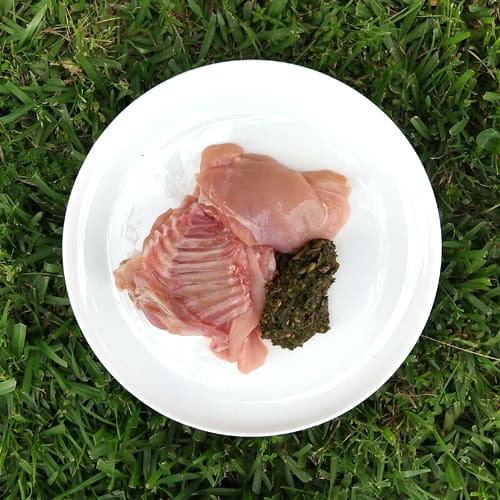
Small Dog Meal Example
Turkey Thigh, Skinless
Rabbit Ribs
Veggie Blend
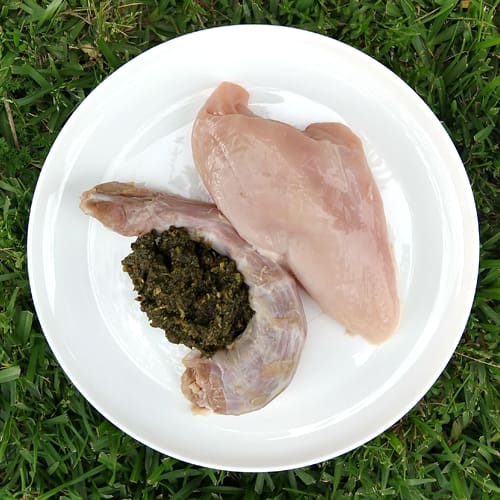
Large Dog Meal Example
Chicken Breast, Skinless
Turkey Neck, Skinless
Veggie Blend
The purpose of feeding lean white meat, raw meaty bones, and vegetables is to provide a bland meal. Bland meals are easier on digestion and allow the dog to adjust to digesting raw foods.
Additionally, each transition step is beneficial to the pet parent. There is a learning curve with raw feeding. The transition plan is ideal to help the pet parent adjust and learn a new way of providing a nutritionally balanced diet to their dog.
Lean White Muscle Meat Options
White muscle meat is the main source of protein in step one. Red meat protein and organs will be added once the dog has adjusted to lean white meat. Meals from lean, white meat allow the dog’s digestive system to adjust to raw proteins and fats. Too many new foods may cause diarrhea and digestive upset.
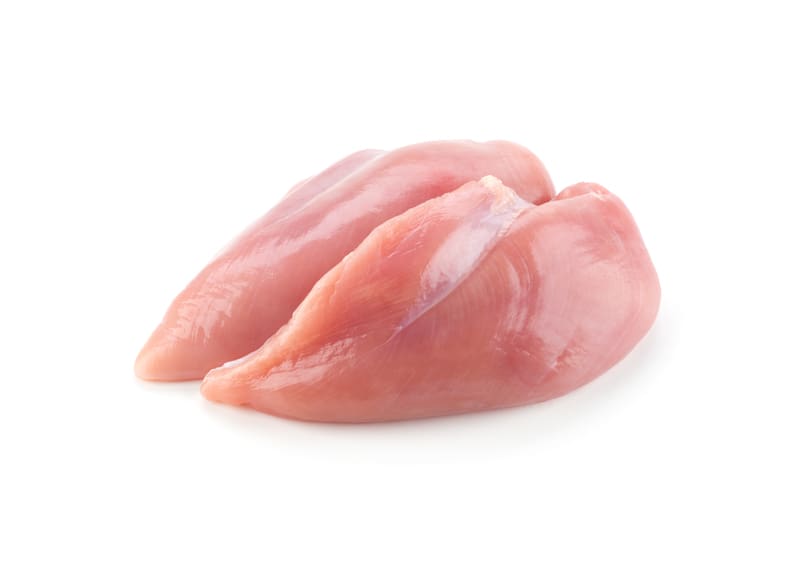
Boneless Chicken Muscle Meat
Chicken is the ideal starter protein when transitioning a dog to raw. Boneless chicken muscle meat from breasts or skinless thighs are good options to provide a low-fat protein option.
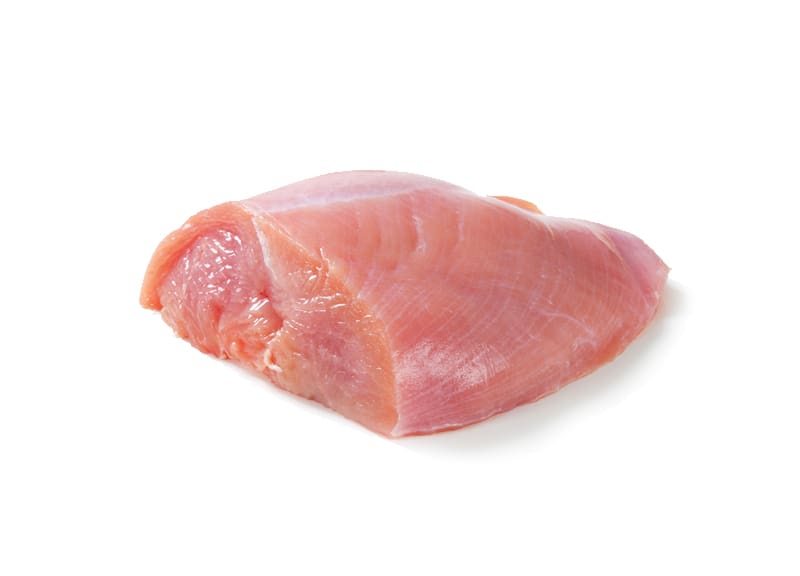
Boneless Turkey Muscle Meat
Turkey is another lean white meat similar to chicken, and it is useful for dogs who are sensitive to chicken. Boneless turkey breasts or skinless thighs are good options to use in step one for the muscle meat ratio.
Poultry Intolerances & Allergies
Some dogs cannot consume chicken or turkey due to an allergy or intolerance. Therefore, these items should be avoided. In these instances, lean pork muscle meat is an alternative option for the starting protein.
Raw Meaty Bone Options
Raw meaty bones (RMB) should be included in the first step of the transition. It is best to select raw meaty bones that are appropriate for the dog’s size. The starting guideline for bone is 10%. However, some dogs will need as high as 15% in the beginning. This bone ratio indicates the amount of actual bone required, and does not include the meat on the bone. Some calculations will be required to determine how much raw meaty bone to feed.
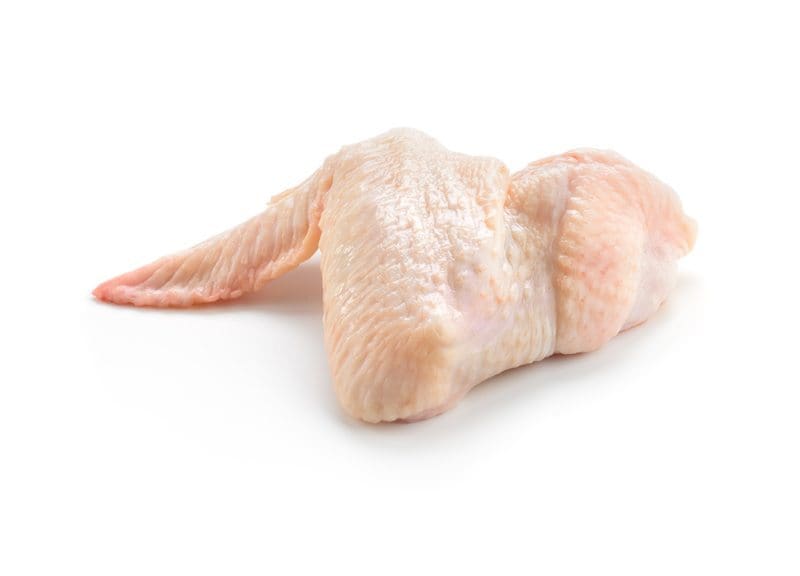
Chicken RMBs
Chicken raw meaty bones provide the most versatile options for dogs of all sizes. Chicken necks, wings, and feet prove beneficial for small to medium size dogs. Chicken feet, wings, leg quarters (skin removed), and frames can often be used for large to giant breeds.

Rabbit RMBs
Domesticated rabbit is a lean white meat protein with soft, edible bones safe for any size dog to consume. Rabbit bones are ideal for small breed dogs who have difficulty with larger bones and for dogs who have an intolerance or allergy to poultry.
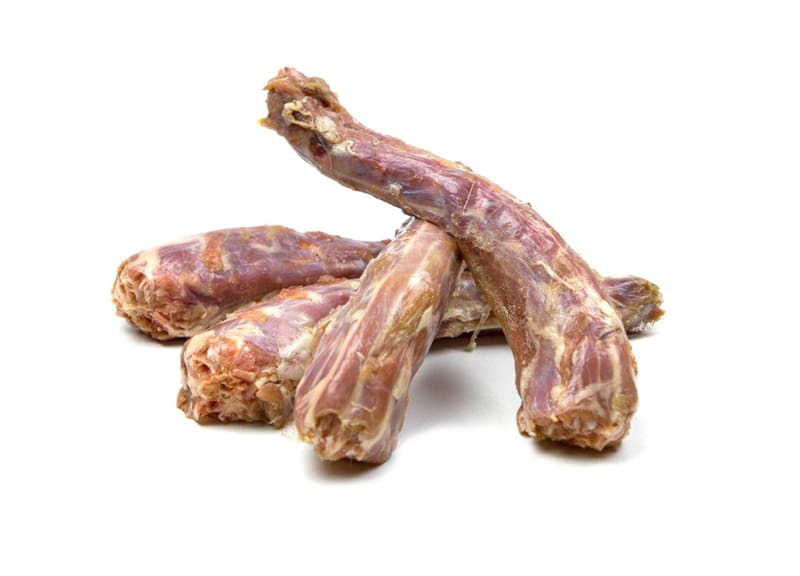
Turkey RMBs
Turkey necks, wingettes, wing tips, and frames are safe raw meaty bones for large and giant dogs, but are not suitable for smaller dogs unless they are ground. Many of the large bones from turkeys such as legs and thighs are not recommended to feed unless ground due to their density and propensity to splinter.
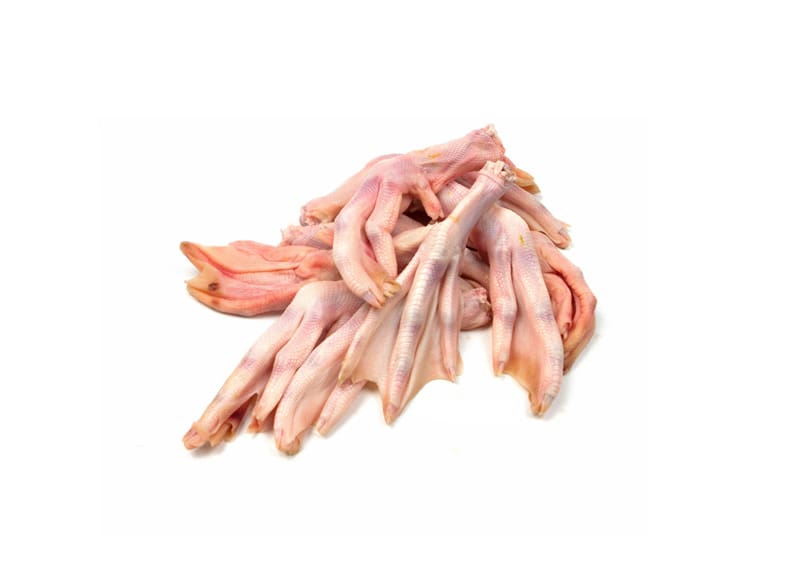
Duck RMBs
Duck feet, necks, and wings are suitable raw meaty bone options for step one. Other duck raw meaty bones should be introduced after the dog is transitioned onto red meat. Limiting the duck raw meaty bones to feet, necks, and wings minimizes the amount of fat introduced in step one.
Money Saving Tip
On average, individual cuts of chicken and turkey will have a higher price per pound or kilogram. Purchasing whole chickens and/or turkeys can help reduce costs. Butcher whole poultry into individual cuts such as 2 leg quarters (or 2 drumsticks and 2 thighs), 1 back, 1 frame, 2 wings, and 2 boneless breast filets. Additionally, the leg quarters can be deboned for additional muscle meat. The neck, heart, gizzard, and liver are included if a whole chicken or turkey is purchased “with giblets”! Save the heart, gizzard, and liver to introduce in later steps of the transition.
Vegetable Options
Commercial dry and canned pet foods contain very high amounts of carbohydrates and fiber. Some dogs may struggle with the transition from high-fiber commercial foods to a low-fiber raw diet. Including high-fiber vegetables provides multiple benefits to dogs and eases the transition. The inclusion of fiber provides the sensation of feeling fuller and helps maintain firm and consistent stool throughout the transition.
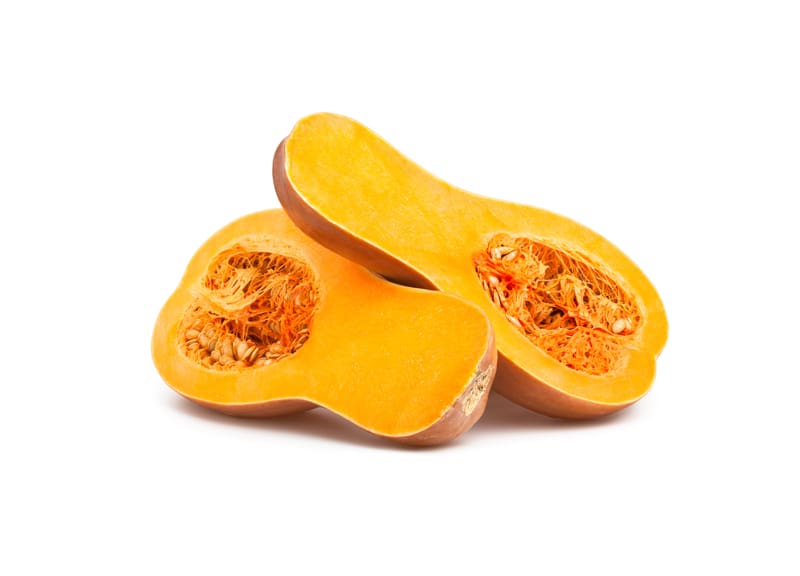
Butternut Squash
Butternut squash is highly palatable for dogs and provides a great foundation for vegetable blends. The soft, creamy texture of baked butternut squash helps mask the flavor of other vegetables that dogs may not like. Starchy vegetables such as squash or sweet potato must be fully cooked.
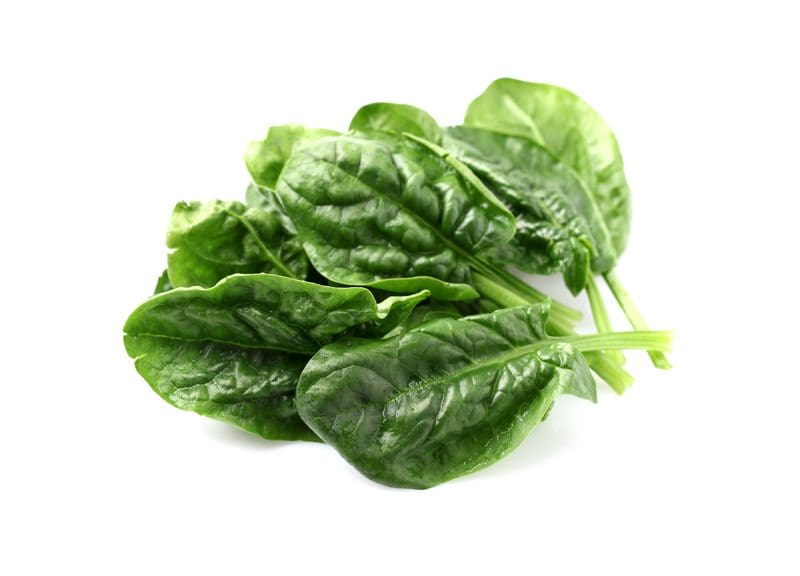
Spinach
Spinach is highly nutritious in small amounts and is an ideal leafy green to include in all raw diets. Spinach is high in fiber and provides a range of essential nutrients.
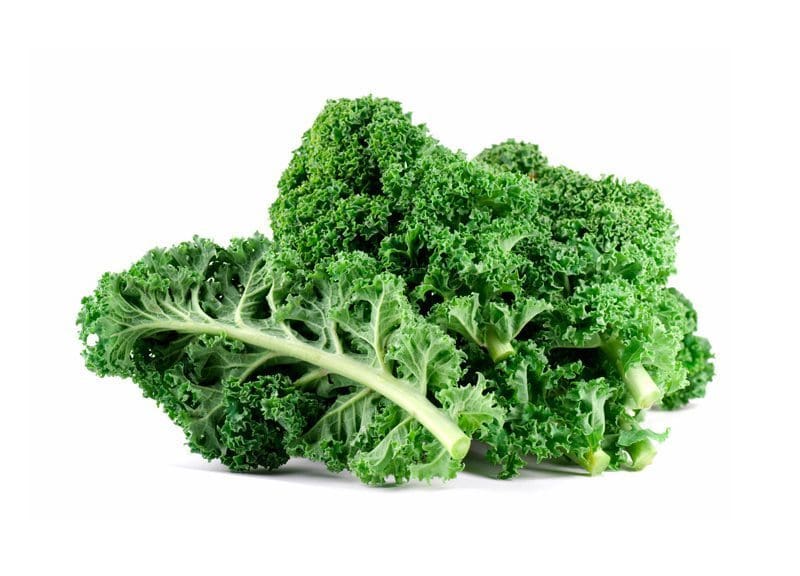
Kale
Kale is a super green powerhouse and is packed with many essential nutrients! The downside to kale is that many dogs may not like the flavor and may refuse to eat it alone. Blending kale with another vegetable like squash or a palatable liquid such as salt-free bone broth are recommended options to prepare kale for a picky dog.
Vegetable Preparation
All plant ingredients should be prepared in a method to allow optimal digestion. Pureeing raw, lightly steaming, or fermenting are the recommended preparation methods for low glycemic vegetables. If starchy vegetables are fed, they must be thoroughly cooked prior to feeding for optimal digestion.
Calculate Ingredient Amounts
Step one is not intended or recommended to feed long-term.
The first step of the raw feeding transition is not nutritionally complete and should not be fed long-term. Proceed to step two once the dog has maintained firm and consistent stool for a minimum of 3-7 days.
CLOSING COMMENTS
Step one of the raw feeding transition is designed to introduce dogs to lean raw muscle meat, raw meaty bones, and vegetables. Transitioning a dog to raw is exciting, but it is best to allow the dog to set the pace. Once stools have maintained firm and consistent for 3-7 days, proceed onto step two of the transition.
Lean White Muscle Meat
The foundation of step one is lean, white muscle meat. The recommended starting guideline is 70% muscle meat.
Raw Meaty Bones
Include raw meaty bones immediately in step one to help maintain firm stool. The recommended starting guideline is 10% for the actual bone. However, some dogs may need as much as 15%. Some calculations will be required to determine how much raw meaty bone to feed.
Vegetables
Including fibrous vegetables helps to provide the sensation of feeling fuller as well as maintaining firm stool. The recommended starting guideline is 20%.
